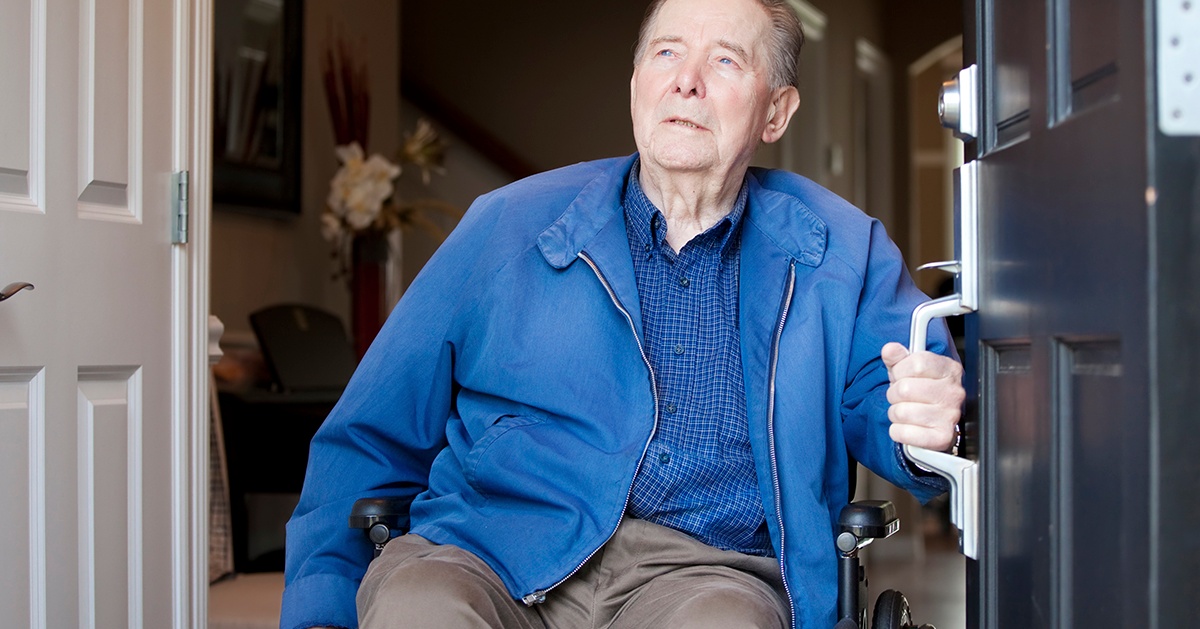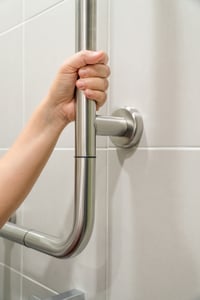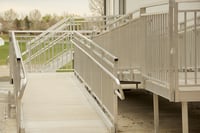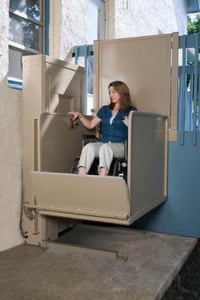
While most public buildings are designed for wheelchair accessibility, the same isn’t always true for private homes, where using even a lightweight wheelchair can be a challenge.
But with a few modifications, it’s easy for people who use wheelchairs to get around inside their homes. Here are some things you can do to make your home wheelchair accessible.
1. Doorways
There’s a good chance the doors in your house aren’t wide enough to accommodate a wheelchair, whether that’s a lightweight wheelchair or a sturdier power chair. The standard doorway width is 24 inches, but you’ll need to extend it to at least 30 inches for wheelchairs to get through.
If extending the doorway isn’t an option, you can remove the doors from their hinges and install pocket doors or replace the doors with drapes or curtains. Inside closets, lower the clothing rods to make it easier for wheelchair users to access their wardrobe.
2. In the bathroom
 Grab bars in the bathroom are essential to anyone using a wheelchair. They make it easier to get in and out of a tub or shower and on and off the toilet.
Grab bars in the bathroom are essential to anyone using a wheelchair. They make it easier to get in and out of a tub or shower and on and off the toilet.
Be sure to install a non-slip mat in the tub and use a toilet riser to increase the height of the toilet for people who have trouble bending over.
3. Raising and rearranging furniture
Wheelchair users need a lot of space to move around. You’ll need to arrange furniture so that there’s at least a five-foot turning radius and a 32-inch path.
You may also want to raise pieces of furniture to make it easy for wheelchair users to sit. You can do this by merely placing small blocks of wood under the legs of your chairs and sofas.
4. Getting rid of rugs
It’s tough trying to steer a wheelchair across a loose rug or thick carpeting. Remove these whenever possible, particularly in bathrooms, the kitchen, and entryways. A low-pile rug in the living room can work as long as it has no tassels and contains a non-slip backing.
5. Going gravel-free
 If moving a lightweight wheelchair across carpeting is a pain, trying to get one through gravel is an outright ordeal.
If moving a lightweight wheelchair across carpeting is a pain, trying to get one through gravel is an outright ordeal.
Whenever possible, replace gravel with a smooth surface like concrete or asphalt, or at least leveled paving stones. If getting rid of the gravel isn’t an option, try to use smaller stones and keep the surface leveled-off and free of weeds.
6. Faucets and doorknobs
Levers make life much more comfortable for wheelchair users, whether that means replacing round doorknobs with lever handles or swapping the round faucets on kitchen and bathroom sinks for levers.
7. Stairways
For wheelchair users, stairways can make entire sections of a home into an out-of-bounds area. Putting in a stair lift or even an in-home elevator allows you or your loved one who uses a wheelchair to have the same level of independence as the rest of the family.
8. Wheelchair ramps
 Putting a wheelchair ramp at the entrance to your home makes life easier for wheelchair users as well as anyone who might have trouble getting up and down steps.
Putting a wheelchair ramp at the entrance to your home makes life easier for wheelchair users as well as anyone who might have trouble getting up and down steps.
Everyone deserves to feel safe and comfortable where they live, but for people who use wheelchairs, home can feel like an obstacle course.
Let Marx Medical help you put things right. We provide a wide range of home modifications, including stair lifts, ramps, railings and bathroom modifications.
And if you need a new mobility option, Marx has wheelchairs for sale and rent, from lightweight wheelchairs to mobility scooters and power chairs. Contact us today to find out how we can make your home more accessible.



